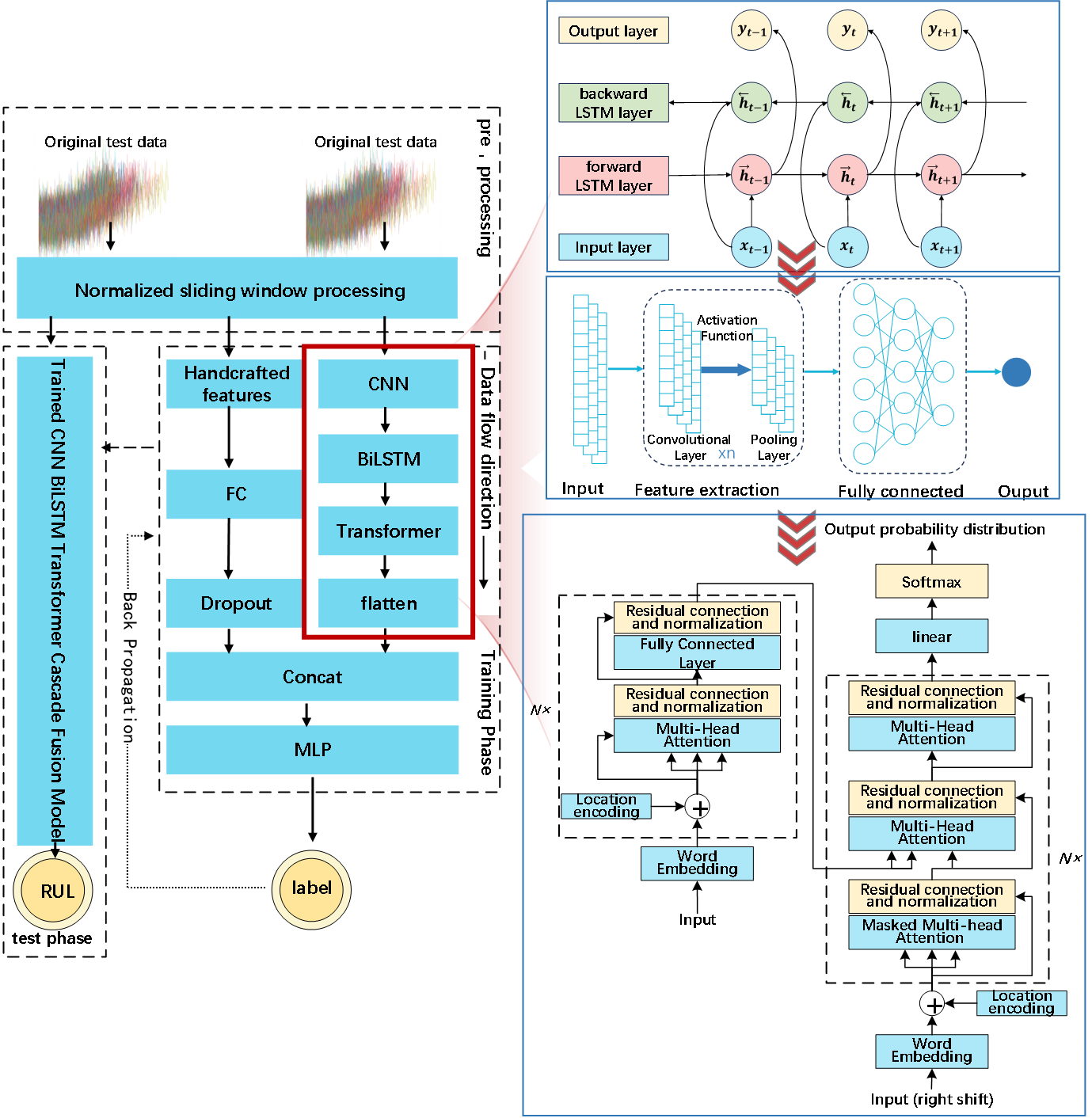Abstract
Remaining Useful Life (RUL) prediction is critical for ensuring equipment safety and optimizing maintenance schedules, directly impacting system reliability and maintenance efficiency. However, in real-world industrial scenarios, factors such as operating condition fluctuations and load variations lead to inconsistent data distributions, making it challenging for existing models to achieve satisfactory adaptability and accuracy. To address this issue, this paper proposes a deep learning framework based on a multi-branch serial-parallel fusion of CNN-BiLSTM-Transformer architectures. Through innovative model architecture design and optimized training strategies, the framework aims to enhance prediction accuracy and robustness under cross-condition and cross-distribution scenarios. Specifically, a training strategy combining snapshot ensemble and cosine annealing learning rate scheduling is introduced to improve model generalization through multi-model ensemble prediction. Experiments conducted on the C-MAPSS aero-engine dataset and the A123 lithium battery dataset validate the effectiveness of the proposed method. The results show that on the FD004 dataset, the proposed model reduces RMSE by 7.61% and Score by 26.39% compared to the best baseline methods; on the main test set of the A123 battery dataset, RMSE is reduced by 16.18%. Overall, the proposed model outperforms traditional machine learning models under both single and complex operating conditions, and its prediction results are comparable to those of mainstream models, demonstrating the feasibility and effectiveness of the proposed method in improving RUL prediction accuracy under cross-condition and cross-distribution scenarios.
Keywords
remaining useful life prediction
multi-branch fusion model
aviation engine
lithium battery
Data Availability Statement
Data will be made available on request.
Funding
This work was supported without any funding.
Conflicts of Interest
The authors declare no conflicts of interest.
Ethical Approval and Consent to Participate
Not applicable.
Cite This Article
APA Style
Zhou, X., & Yang, L. (2025). Remaining Useful Life Prediction Using Optimized Multi-source Features and Model Fusion. ICCK Transactions on Systems Safety and Reliability, 1(2), 114–127. https://doi.org/10.62762/TSSR.2025.167369
Publisher's Note
ICCK stays neutral with regard to jurisdictional claims in published maps and institutional affiliations.
Rights and Permissions
Institute of Central Computation and Knowledge (ICCK) or its licensor (e.g. a society or other partner) holds exclusive rights to this article under a publishing agreement with the author(s) or other rightsholder(s); author self-archiving of the accepted manuscript version of this article is solely governed by the terms of such publishing agreement and applicable law.


 Submit Manuscript
Edit a Special Issue
Submit Manuscript
Edit a Special Issue

